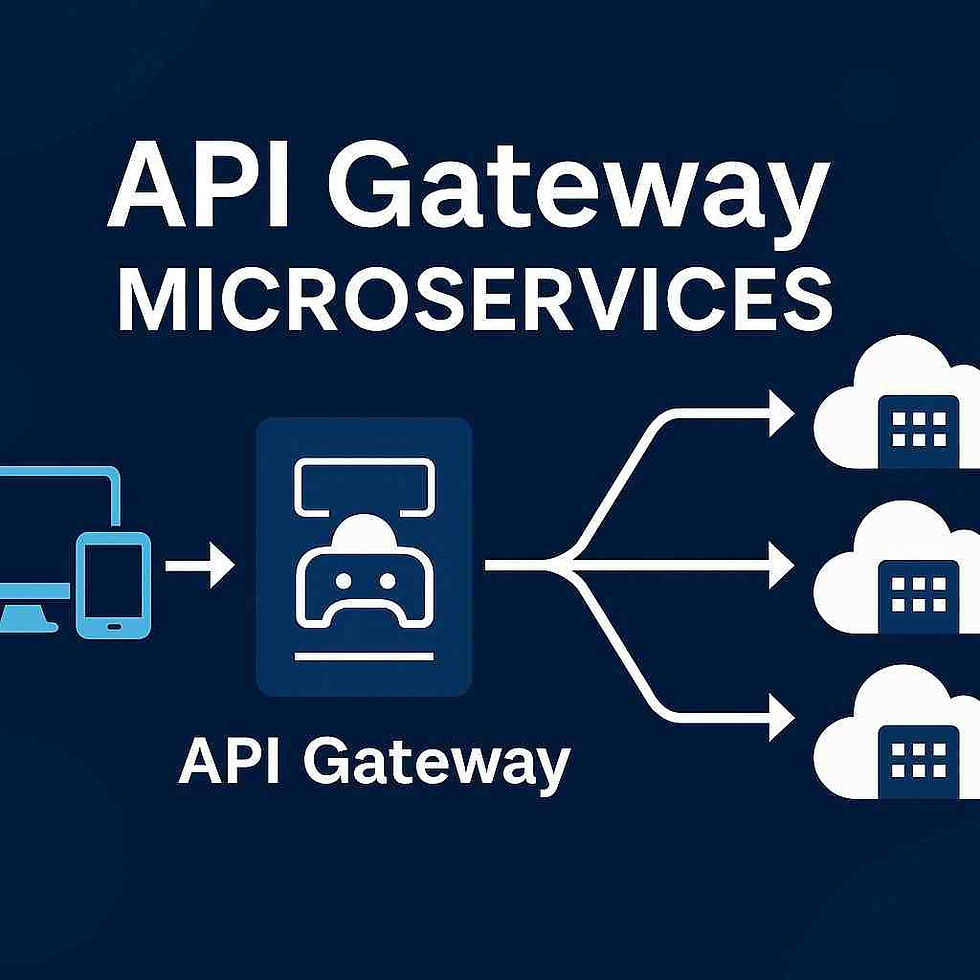Postman for Ubuntu 2025 - Installation Guide & Setup Tutorial
- Gunashree RS
- Jun 9
- 8 min read
If you're an Ubuntu developer working with APIs, Postman is an indispensable tool that can transform your development workflow. Whether you're building REST APIs, testing endpoints, or collaborating with your team on API documentation, having Postman properly configured on your Ubuntu system is crucial for productive development.
In this comprehensive guide, we'll walk you through everything you need to know about installing and optimizing Postman specifically for Ubuntu systems, covering multiple installation methods, Ubuntu-specific configurations, and troubleshooting common issues that Ubuntu users encounter.

Why Choose Postman for Ubuntu Development?
Postman is the most popular collaboration platform for API development, which is used by 10 million developers and 500,000 companies all over the world. Ubuntu users particularly benefit from Postman because it integrates seamlessly with the Ubuntu ecosystem and offers several advantages:
Key Benefits for Ubuntu Users:
Native Performance: Runs smoothly on all Ubuntu versions from 16.04 LTS onwards
Snap Integration: Easy installation and automatic updates through Ubuntu's package management
Terminal Compatibility: Perfect integration with Ubuntu's command-line environment
Resource Efficiency: Optimized performance on Ubuntu's lightweight desktop environment
Open Source Ecosystem: Fits perfectly with Ubuntu's open-source philosophy
How to Install Postman for Ubuntu: Complete Methods Guide
Method 1: Install via Ubuntu Software Center (Easiest)
The simplest way to install Postman on Ubuntu is through the built-in Ubuntu Software Center, which uses Snap packages behind the scenes.
Step-by-step installation:
Open Ubuntu Software Center:
Click on the "Show Applications" button
Search for "Ubuntu Software" and open it
Search for Postman:
Type "Postman" in the search bar
Click on the Postman application when it appears
Install Postman:
Click the "Install" button
Enter your password when prompted
Wait for the installation to complete
Launch Postman:
Find Postman in your applications menu.
Click to launch the application.
Method 2: Install Using Snap Command (Recommended)
For Ubuntu Desktop 22.04 to install Postman mostly there are mostly two options: Through Ubuntu Software or sudo snap install postman (GUI or command). You can install Postman on Linux from the Snap store page or by using the snap install postman command.
Installation commands:
Update your system: sudo apt update && sudo apt upgrade
Install Postman via Snap: sudo snap install postman
Verify installation: snap list postman
Launch Postman: postman
Advantages of Snap installation:
Automatic security updates
Sandboxed environment for enhanced security
Cross-version compatibility (works on Ubuntu 16.04+)
Easy removal and reinstallation
Method 3: Manual Installation from the Official Website
For users who prefer more control over their installation or are using older Ubuntu versions, manual installation is available.
Installation process:
Download the latest version:
cd ~/Downloadswget https://dl.pstmn.io/download/latest/linux64 -O postman-linux-x64.tar.gzExtract the archive:
tar -xzf postman-linux-x64.tar.gzMove to the system directory:
sudo mv Postman /opt/postmanCreate a symbolic link:
sudo ln -s /opt/postman/Postman /usr/local/bin/postmanCreate a desktop shortcut:
cat > ~/.local/share/applications/postman.desktop <<EOL
[Desktop Entry]
Name=Postman
GenericName=API Client
Comment=Test and build APIs
Exec=/opt/postman/Postman
Icon=/opt/postman/app/resources/app/assets/icon.png
Terminal=false
Type=Application
Categories=Development;Network;
StartupWMClass=Postman
EOLMethod 4: Install via Flatpak
Flatpak offers another containerized installation option for Ubuntu users who prefer this package management system.
Installation steps:
Install Flatpak (if not already installed):
sudo apt install flatpak
sudo apt install gnome-software-plugin-flatpakAdd Flathub repository:
flatpak remote-add --if-not-exists flathub https://flathub.org/repo/flathub.flatpakrepoInstall Postman:
flatpak install flathub com.getpostman.PostmanLaunch Postman:
flatpak run com.getpostman.PostmanUbuntu Version-Specific Installation Guide
Ubuntu 24.04 LTS (Noble Numbat)
Ubuntu 24.04 LTS users have access to all installation methods with optimal compatibility:
Recommended approach:
# Method 1: Snap (Recommended)
sudo snap install postman# Method 2: Flatpak alternative
sudo apt install flatpak
flatpak install flathub com.getpostman.PostmanUbuntu 22.04 LTS (Jammy Jellyfish)
Ubuntu 22.04 LTS offers excellent Postman support with all features working out of the box:
Installation command:
sudo snap install postmanPost-installation optimization:
# Enable desktop integration
sudo snap connect postman:desktop
sudo snap connect postman:homeUbuntu 20.04 LTS (Focal Fossa)
For Ubuntu 20.04 LTS users, Snap installation is the most reliable method:
Step-by-step process:
Ensure snapd is installed:
sudo apt update
sudo apt install snapdInstall Postman:
sudo snap install postmanUbuntu 18.04 LTS (Bionic Beaver)
Ubuntu 18.04 users may encounter some compatibility issues. Here's the recommended approach:
Installation with compatibility fixes:
# Install required dependencies first
sudo apt install libgconf2-4 libxss1 libgconf-2-4# Install via Snap
sudo snap install postmanOptimizing Postman for Ubuntu Systems
Performance Optimization
1. System Resource Management:
# Check system resources
free -h
htop
# Optimize Postman memory usage
# Go to Postman → File → Settings → General
# Set "Max response size" to the appropriate value
# Enable "Trim keys and values in request body"
2. Desktop Integration:
# For Snap installations, enable desktop integration
sudo snap connect postman:desktop
sudo snap connect postman:home
sudo snap connect postman:removable-media
3. Theme Configuration:
Navigate to Settings → Themes
Choose the "Dark" theme for better Ubuntu integration
Adjust font size for optimal readability on Ubuntu displays
Ubuntu-Specific Configuration
1. Environment Variables Integration:
# Add to ~/.bashrc or ~/.profile
export POSTMAN_API_KEY="your-api-key"
export API_BASE_URL="https://api.example.com"
# Reload environment
source ~/.bashrc
2. Proxy Configuration for Ubuntu Networks:
# For corporate Ubuntu environments
# Go to File → Settings → Proxy
# Configure system proxy settings
gsettings get org.gnome.system.proxy.http host
gsettings get org.gnome.system.proxy.http port
Troubleshooting Common Ubuntu Issues
Issue 1: Postman Won't Launch on Ubuntu
Symptoms: Application doesn't start, shows a blank screen, or crashes immediately.
Ubuntu-specific solutions:
Fix missing dependencies (Ubuntu 18.04/20.04):
sudo apt install libgconf2-4 libxss1 libgconf-2-4 libxrandr2 libasound2 libpangocairo-1.0-0 libatk1.0-0 libcairo-gobject2 libgtk-3-0 libgdk-pixbuf2.0-0 libxcomposite1 libxcursor1 libxdamage1 libxext6 libxfixes3 libxi6 libxrender1 libxtst6 libxss1 libnss3Reset Snap permissions:
sudo snap disconnect postman:desktop
sudo snap connect postman:desktop
sudo snap refresh postmanClear application data: # For Snap installations
rm -rf ~/snap/postman/common/.config/Postman# For manual installations
rm -rf ~/.config/PostmanIssue 2: Ubuntu Software Center Installation Issues
Problem: Installation fails through Ubuntu Software Center.
Solutions:
Update Snap packages:
sudo snap refresh
sudo apt update && sudo apt upgradeInstall via command line instead:
sudo snap install postmanCheck available space:
df -h# Ensure at least 500MB of free space
Issue 3: Network Connectivity Problems on Ubuntu
Symptoms: Cannot make API requests, timeout errors, or proxy issues.
Ubuntu-specific fixes:
Check the Ubuntu firewall:
sudo ufw status
sudo ufw allow out 443
sudo ufw allow out 80Configure system proxy:
# Check current proxy settings
env | grep -i proxy
# Set proxy for current session
export http_proxy=http://proxy.company.com:8080
export https_proxy=http://proxy.company.com:8080
DNS resolution check:
systemd-resolve --status
nslookup api.example.com
Issue 4: Performance Issues on Ubuntu
Symptoms: Slow startup, high memory usage, or unresponsive interface.
Ubuntu optimization steps:
Check system resources: # Monitor system performance
top
iotop
# Check available memory
free -h
Optimize Snap confinement: # Check Snap connections
snap connections postman
# Optimize permissions
sudo snap connect postman:network-manager
Clear cache and temporary files: # Clear Snap cache
sudo snap set system refresh.metered=hold
# Clear Postman cache
rm -rf ~/snap/postman/common/.cache/
Advanced Ubuntu Integration
Command Line Automation
1. Newman CLI Installation:
# Install Node.js and npm
sudo apt install nodejs npm# Install Newman globally
sudo npm install -g newman# Run collections from the command line
newman run collection.json --environment environment.json2. Bash Aliases for Productivity:
# Add to ~/.bashrc
alias postman-cli='newman'
alias pm-run='newman run'
alias pm-collection='postman --collection'
# Reload aliases
source ~/.bashrc
Ubuntu Desktop Integration
1. Custom Keyboard Shortcuts:
# Open Settings → Keyboard → Shortcuts
# Add custom shortcut: Ctrl+Alt+P → /snap/bin/postman
gsettings set org.gnome.settings-daemon.plugins.media-keys custom-keybindings "['/org/gnome/settings-daemon/plugins/media-keys/custom-keybindings/postman/']"
2. Nautilus Integration:
# Create a Nautilus script for opening Postman collections
mkdir -p ~/.local/share/nautilus/scripts
cat > ~/.local/share/nautilus/scripts/open-with-postman <<'EOF'
#!/bin/bash
postman --collection "$1"
EOF
chmod +x ~/.local/share/nautilus/scripts/open-with-postman
Comparison of Installation Methods for Ubuntu
Method | Ubuntu Compatibility | Auto-Updates | Security | Ease of Use | Resource Usage |
Ubuntu Software Center | Excellent (16.04+) | Yes | High (Sandboxed) | Very Easy | Medium |
Snap Command | Excellent (16.04+) | Yes | High (Sandboxed) | Easy | Medium |
Manual Installation | Good (All versions) | Manual | Medium | Moderate | Low |
Flatpak | Good (18.04+) | Yes | High (Sandboxed) | Easy | Medium-High |
Recommendation: For most Ubuntu users, the Snap installation method (either through Ubuntu Software Center or command line) provides the best balance of ease, security, and maintenance.
Best Practices for Ubuntu Users
Security Considerations
Environment Variable Management:
# Store sensitive data in environment variables
echo 'export API_SECRET="your-secret"' >> ~/.profile
# Never commit these to version controlWorkspace Isolation:
Use different workspaces for different projects.
Implement proper access controls for team workspaces
Regular backup of collections and environments
Network Security:
Always use HTTPS endpoints when possible.
Implement proper authentication headers.
Use Ubuntu's built-in firewall for additional protection
Performance Best Practices
Resource Management:
Monitor memory usage with htop.
Close unused collections and tabs
Limit request history retention
System Integration:
Use Ubuntu's package management for dependencies.
Leverage system environment variables
Integrate with Ubuntu's notification system
Frequently Asked Questions
How do I update Postman on Ubuntu?
For Snap installations (most common):
sudo snap refresh postmanUpdates are typically automatic, but you can force an update manually.
For manual installations: Download the latest version and repeat the installation process, or set up an update script.
Can I run multiple versions of Postman on Ubuntu simultaneously?
Yes, but it requires careful management. Install different versions in separate directories:
# Install stable version via Snap
sudo snap install postman
# Install beta version manually to /opt/postman-beta/
# Use different desktop entries and command aliasesWhy won't Postman start on Ubuntu 18.04?
This is usually due to missing dependencies. Install the required libraries:
sudo apt install libgconf2-4 libxss1 libgconf-2-4Then try launching Postman again.
How do I fix the "Unable to fetch data" error on Ubuntu?
This error often occurs due to network or authentication issues:
Check your internet connection
Clear Postman cache: rm -rf ~/.config/Postman/
Restart Postman
Check if the corporate firewall is blocking requests
Can I use Postman without a GUI on Ubuntu Server?
Yes, use Newman (Postman's command-line tool):
sudo npm install -g newman
newman run collection.json --reporters cli,json
How do I backup my Postman data on Ubuntu?
For Snap installations:
# Backup collections and environments
cp -r ~/snap/postman/common/.config/Postman/partitions/ ~/postman-backup/For manual installations:
cp -r ~/.config/Postman/ ~/postman-backup/What's the difference between Snap and Flatpak installations on Ubuntu?
Snap: Native Ubuntu package manager, better desktop integration, smaller download size
Flatpak: Universal package manager, more isolated environment, larger download size
Both provide automatic updates and security sandboxing.
How do I integrate Postman with Ubuntu's development workflow?
Use environment variables for API keys
Create bash aliases for common Newman commands
Set up custom keyboard shortcuts
Integrate with Git hooks for automated testing
Use Ubuntu's notification system for test results
Key Takeaways
• Multiple installation options: Ubuntu users can choose from Snap (recommended), Flatpak, or manual installation based on their needs and Ubuntu version
• Excellent Ubuntu compatibility: Postman works seamlessly across all supported Ubuntu versions (16.04 LTS and newer) with optimal performance
• Snap integration advantages: Automatic updates, security sandboxing, and native Ubuntu desktop integration make Snap the preferred installation method
• Version-specific considerations: Different Ubuntu versions may require specific dependencies or configuration tweaks for optimal performance
• Troubleshooting knowledge: Most Ubuntu-specific issues can be resolved by installing missing dependencies, clearing the cache, or adjusting Snap permissions
• Command-line integration: Newman CLI provides powerful automation capabilities that integrate perfectly with Ubuntu's terminal-centric workflow
• Performance optimization: Ubuntu users can optimize Postman performance through proper resource management, desktop integration, and system-level configurations
• Security best practices: Leverage Ubuntu's security features, environment variables, and proper workspace management for secure API development




Ubuntu developers seeking reliable tools appreciate guides that simplify installation and integration. Postman remains essential for testing APIs efficiently. For broader data operations, cloud-based systems streamline connectivity and collaboration. Exploring https://google-cloud.pissedconsumer.com/customer-service.html offers insight into how users solve challenges related to syncing services or managing permissions. Efficient cloud workflows empower tech professionals to innovate faster while maintaining secure, scalable solutions tailored to modern software demands.